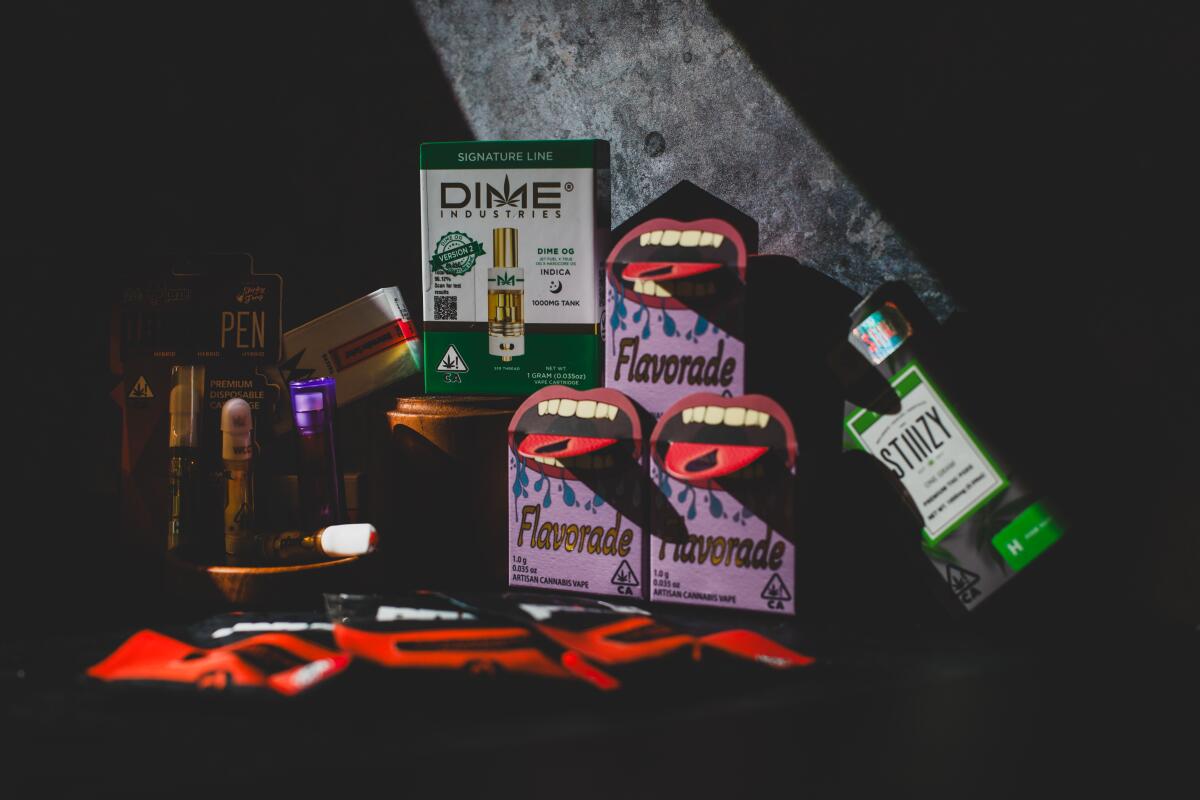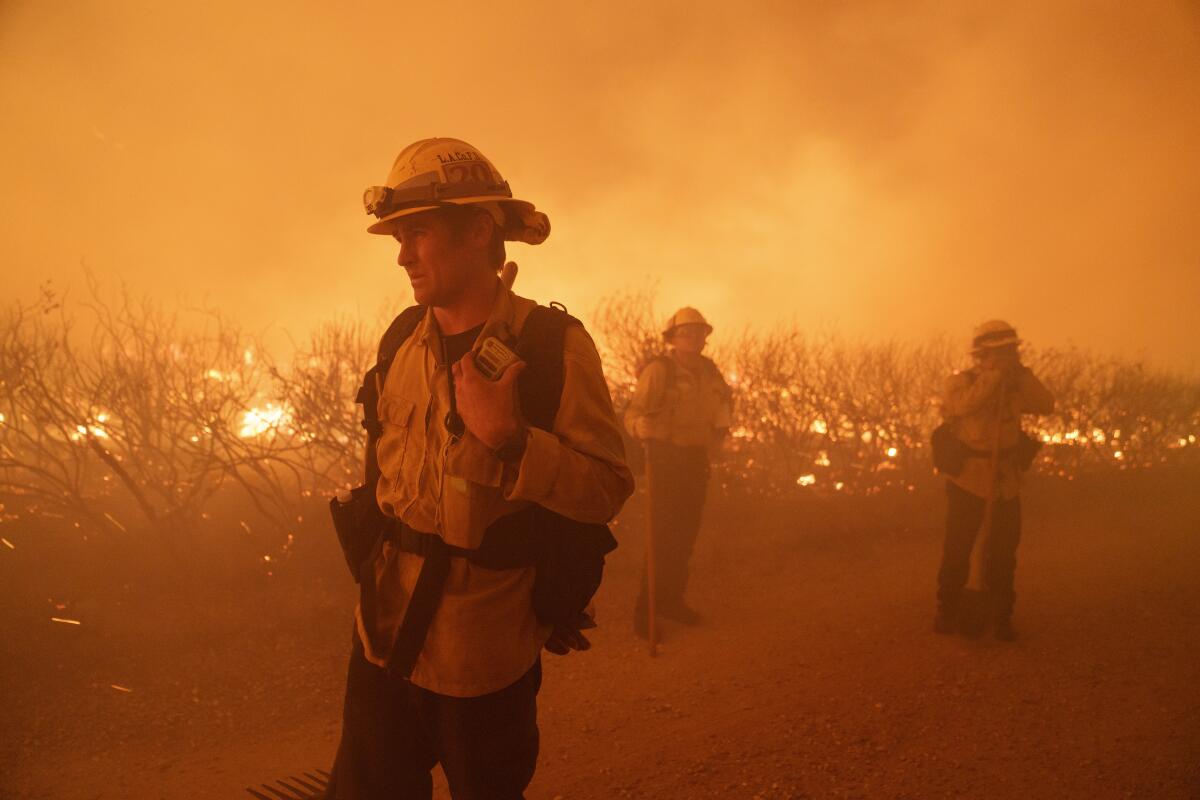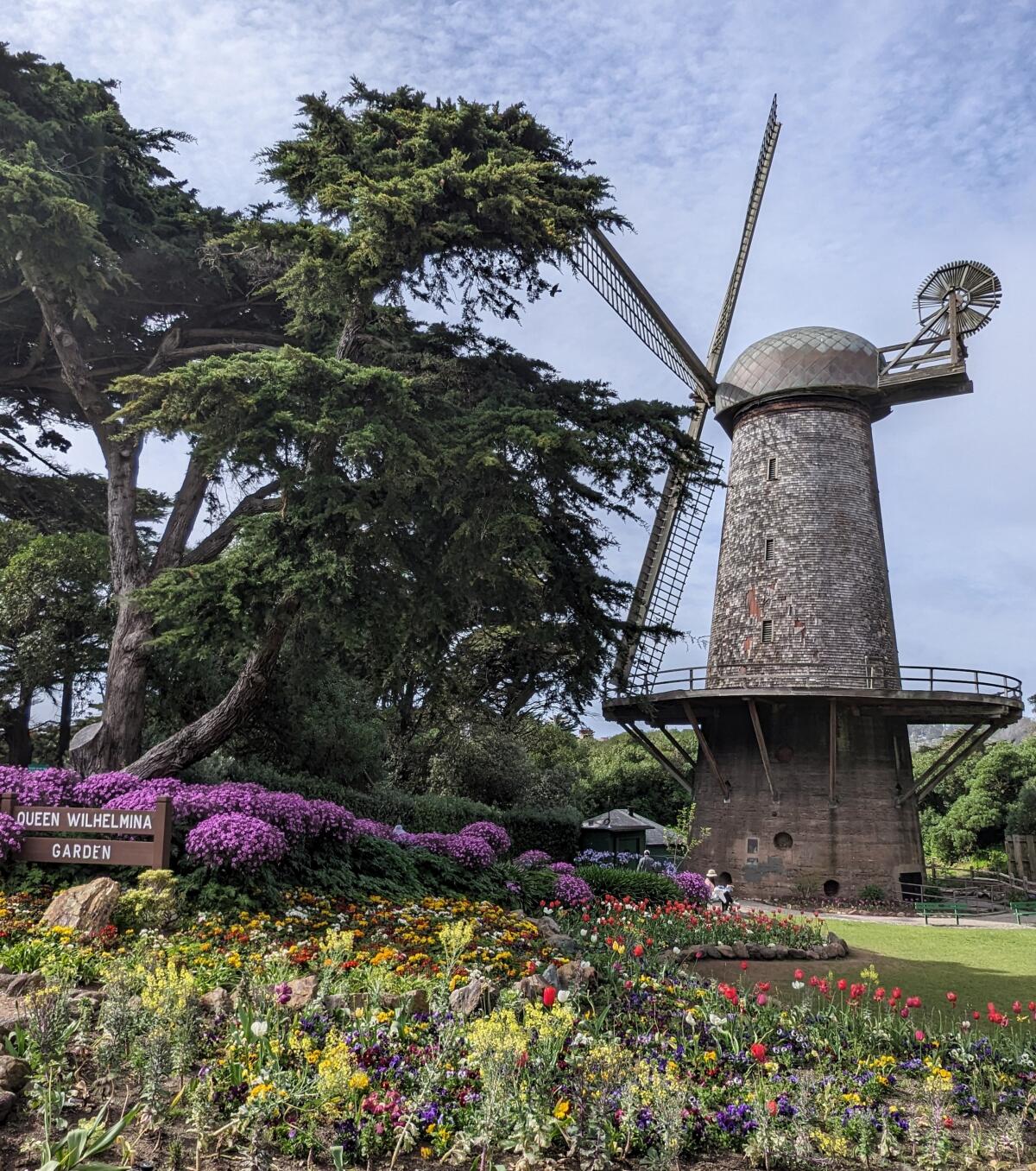How dirty is your weed? A joint investigation finds high levels of pesticides in products

- Share via
Good morning. It’s Monday, June 17. Here’s what you need to know to start your day.
- Weed is legal and (technically) regulated in California. That doesn’t mean it’s safe.
- A wildfire near Gorman has burned around 15,000 acres and sparked evacuations.
- A new play reckons with a racist chapter of Palm Spring’s history.
- And here’s today’s e-newspaper.
You're reading the Essential California newsletter
Our reporters guide you through our biggest news, features and recommendations every morning
You may occasionally receive promotional content from the Los Angeles Times.
How dirty is your weed?
Weed is legal and subject to regulation in the Golden State. But as a joint investigation (it was right there) by The Times and cannabis industry newsletter WeedWeek found, that doesn’t mean it’s safe, as California regulators are often failing to get contaminated cannabis products off shelves.
The Times and WeedWeek purchased dozens of cannabis products from retail stores, then tested them at private labs. Out of 42 products tested, 25 had concentrations of pesticides above either state-allowed levels or current federal standards for tobacco.
“The contaminants include chemicals tied to cancer, liver failure, thyroid disease and genetic and neurologic harm to users and unborn children,” Times reporter Paige St. John and WeedWeek editor Alex Halperin wrote in a subscriber exclusive. “Most of the pesticides found were in low concentrations that risk long-term harm by repeated use, though the extent of the health threat may not be known for years.”
However, the testing did show that vapes from five popular brands had levels of pesticides above federal risk thresholds for harm from a single exposure as set by the Environmental Protection Agency.
There are 66 pesticides California requires testing for, but it’s an outdated list, unchanged in roughly six years. There are many more not included on the state’s list that have been linked to liver cancer, reproductive disorders and more.

One piece of the problem: Major gaps in regulation “leave policing of the industry largely in the hands of labs financially beholden to the companies whose products they test,” Paige and Alex wrote. “Legislation to require independent fraud and accuracy checks has remained stalled in Sacramento for two years amid backroom negotiations between industry players and regulators.”
Where are state regulators in all this? Mostly silent.
California’s Department of Cannabis Control has yet to propose new regulations, despite years of requests to test for more pesticides.
The department’s director, Nicole Elliott, “declined to be interviewed on the extent of the pesticide threat,” Paige and Alex noted. Some members of her team did talk, though.
“Employees, who spoke on condition of anonymity, complained of a lack of willingness within the agency to take a hard line on pesticide contamination,” Paige and Alex wrote. “One said she was schooled on the importance of ‘not disrupting the market.’”
And that market is huge, as is the potential profit. With billions of consumer dollars out there, it’s not surprising corners were cut — or, more accurately, deadly poison sprayed, to grow more weed more quickly.
Compounding the problem is the lack of data on cannabis’ health effects. That’s due in large part to the federal government’s current classification of marijuana as among dangerous drugs including heroin and LSD, which limits its medical research. That could change soon, though, as the U.S Department of Justice recently proposed reclassifying marijuana.
The state of the industry is also hurting small growers. Paige and Alex spoke with Mary Gaterud, who has grown marijuana on her Humboldt County farm for decades.
“The people who are doing it right get crushed,” she told them. “The bad actors are encouraged and rewarded. And the consumers are poisoned while being told they are safe.”
You can read the in-depth reporting from Paige St. John and Alex Halperin in our subscriber exclusive here. And there’s more from this investigation below:
- Here’s how we tested weed products for pesticides.
- A look at how contaminated weed can affect the human body.
- This graphic shows how good weed goes bad.
Today’s top stories

Climate and environment
- Should FEMA recognize extreme heat and wildfire smoke as “major disasters”?
- The Post fire near Gorman had burned around 15,000 acres as of Sunday evening. Meanwhile a Lancaster-area brush fire burned several structures and threatened homes.
- As California’s largest urban water supplier investigates its top manager, some worry that progress could be stymied.
- A mountain lion was found dead on the 101 Freeway, near a partially built wildlife crossing in Agoura Hills.
Power and politics
- The next installment of The Times’ ”L.A. Influential” series is out. This week, we’re following “The Money.” Here’s a look at the people with a lot of it who are shaping the region.
- President Biden and former President Obama shattered Democratic fundraising records this weekend during a glitzy L.A. event.
- L.A. City Councilman Kevin de León attended the Biden fundraiser as he seeks a Democratic comeback.
- Threats of terrorism in the U.S. are ‘more diverse and difficult to counter.’
Education
- Hundreds of pro-Palestinian students walked out in protest at Stanford University’s graduation.
- UC Irvine renamed its biology school after receiving a $50-million donation from a biotech pioneer.
- Guest opinion: Here’s why the LAUSD should ban smartphones in schools.
More big stories
- Refugio State Beach has been closed for repairs, but officials hope to reopen it later this summer.
- Federal authorities are investigating a plane crash that killed two near the Chino Airport.
- One person was found dead and another was rescued at the base of steep cliffs in San Pedro.
- Trump is lionizing Jan. 6 rioters as ‘warriors.’ Could the dog whistle be any louder?
- Fast food chains launch ‘value menu’ war after cost complaints. Will it last?
- A new drug’s potentially fatal side effects have been obscured by a ‘soothing acronym,’ doctors say.
- During Watergate, the Supreme Court spoke with one voice. Can it do the same in Trump’s case?
Get unlimited access to the Los Angeles Times. Subscribe here.
Commentary and opinions
- Steve Lopez: She’s 80, washing dishes and fighting for a better deal for younger workers.
- Robin Abcarian: A California crackdown on “diet weed” could devastate patients who rely on CBD.
- George Skelton: Stop playing politics on the retail theft crackdown.
- Jackie Calmes: The Trump veep guessing game is silly.
- Times editorial board: Of course politics influence the justice system. That doesn’t mean the Trump and Biden verdicts were rigged.
- Guest opinion: Father’s Day invites lots of gender stereotypes. But my dad doesn’t fit any mold.
- Guest opinion: The Supreme Court went out of its way to ignore common sense on bump stocks.
Today’s great reads

People of color lost a haven in Palm Springs. A new play dramatizes their loss. Former resident Alvin Taylor “wants audiences to know that a whole world was destroyed when his home ... and dozens of others in Section 14 were either razed or burned to the ground between 1959 and 1968 in acts that the state attorney general’s office said amounted to ‘a city-engineered holocaust,’” Times reporter Tyrone Beason writes.
How can we make this newsletter more useful? Send comments to essentialcalifornia@latimes.com.
For your downtime

Going out
- 😋 If you find yourself stuck in Koreatown traffic, stop here to eat.
- 😃 Do you have a “happy place” in L.A.? We want to hear from you.
Staying in
- 📖 Priyanka Mattoo tells the twisty story of how she quit her job as a Hollywood agent to pursue a career in writing in her memoir “Bird Milk & Mosquito Bones.”
- 🧑🍳 Here’s a recipe for caramelized lemon and feta turkey meatballs.
- ✏️ Get our free daily crossword puzzle, sudoku, word search and arcade games.
And finally ... a great photo
Show us your favorite place in California! We’re running low on submissions. Send us photos that scream California and we may feature them in an edition of Essential California.

Today’s photo comes from David Hayashida of Greenbrae, Calif.: San Francisco’s flowering Golden Gate Park.
David writes: “Spring in San Francisco is marked by the appearance of magnolia, rhododendron, cherry, tulip, wildflower and other brightly colored blossoms throughout Golden Gate Park. My favorite springtime spot in the park is the Queen Wilhelmina Garden.”
Have a great day, from the Essential California team
Ryan Fonseca, reporter
Amy Hubbard, deputy editor, Fast Break
Check our top stories, topics and the latest articles on latimes.com.
Sign up for Essential California
The most important California stories and recommendations in your inbox every morning.
You may occasionally receive promotional content from the Los Angeles Times.




